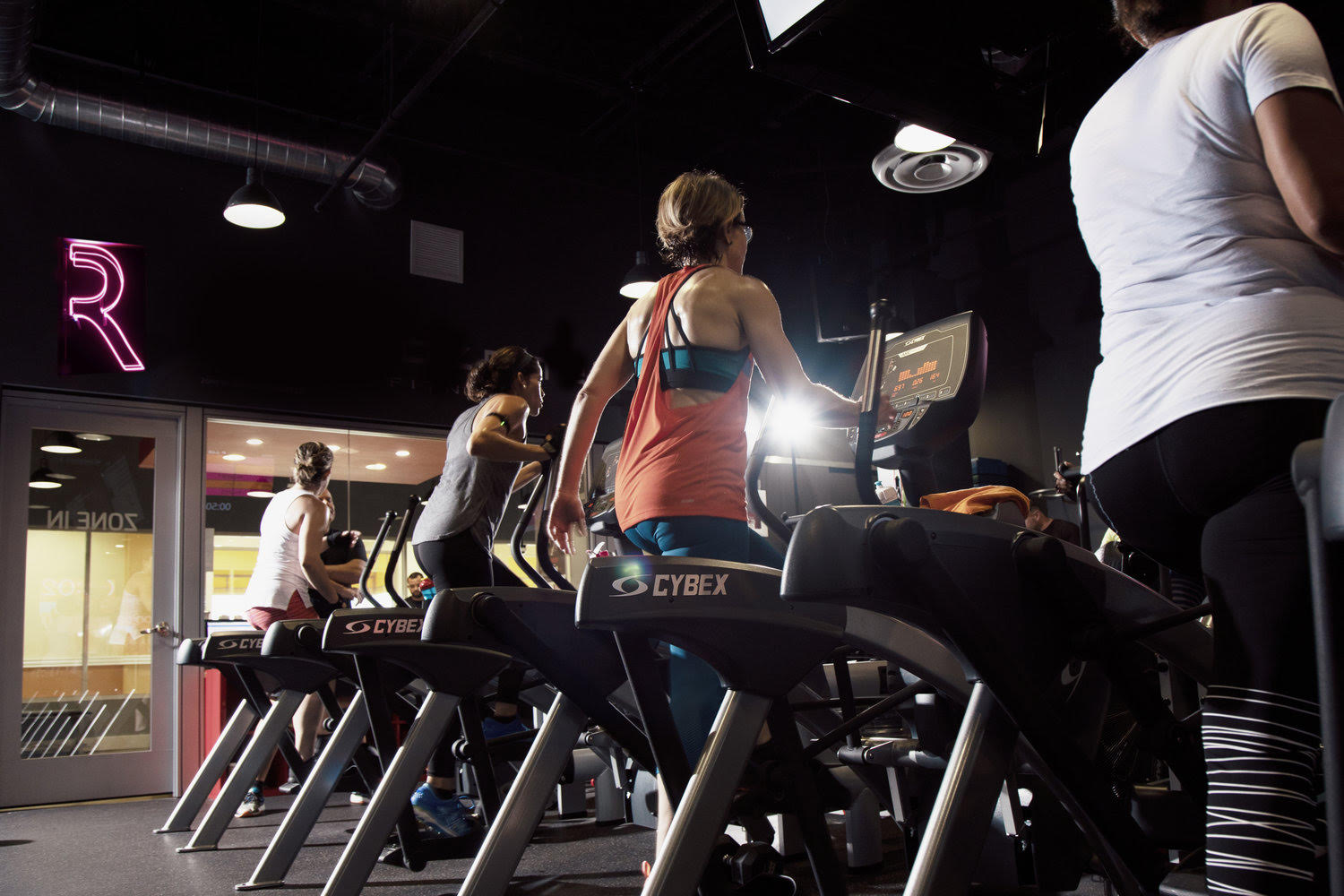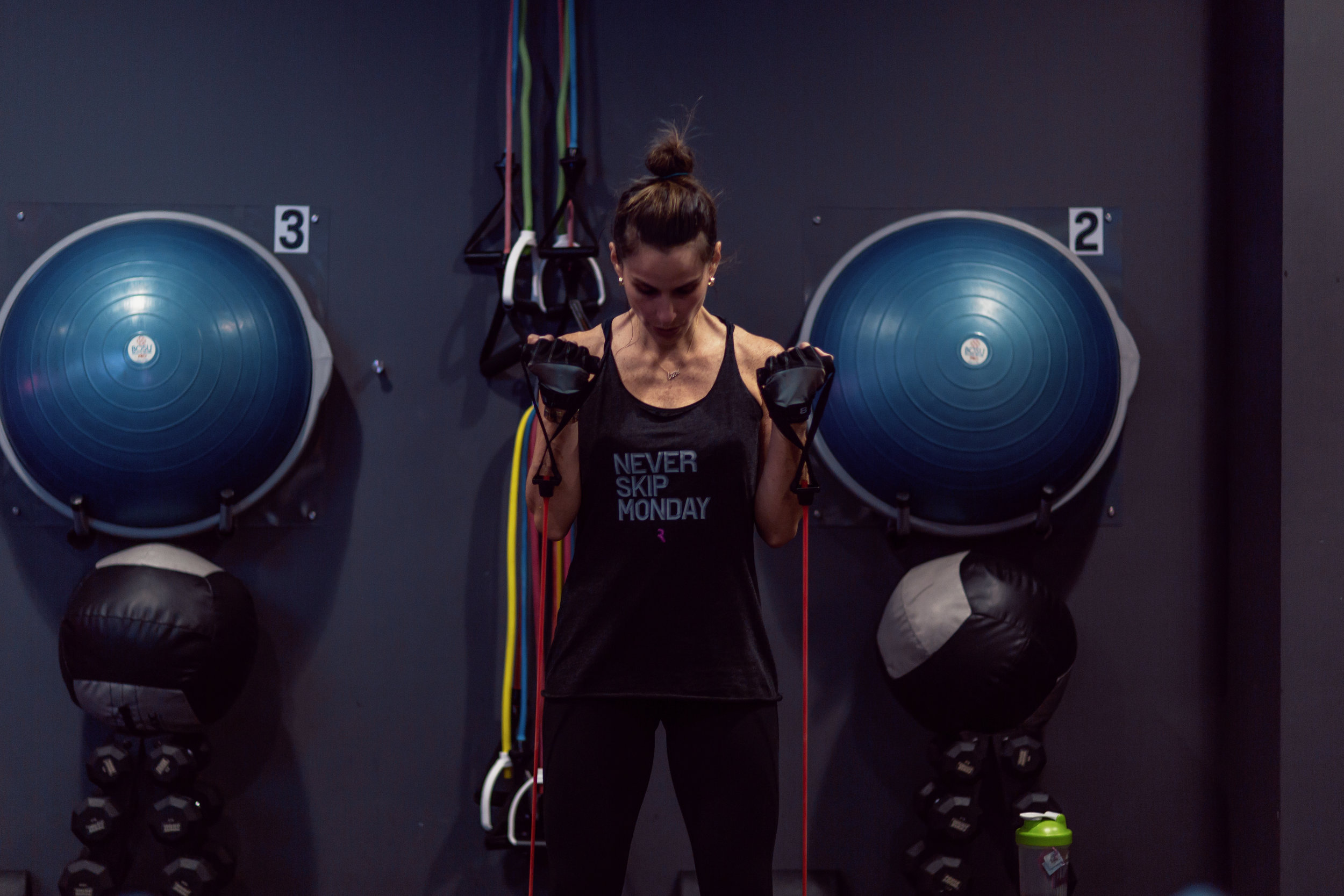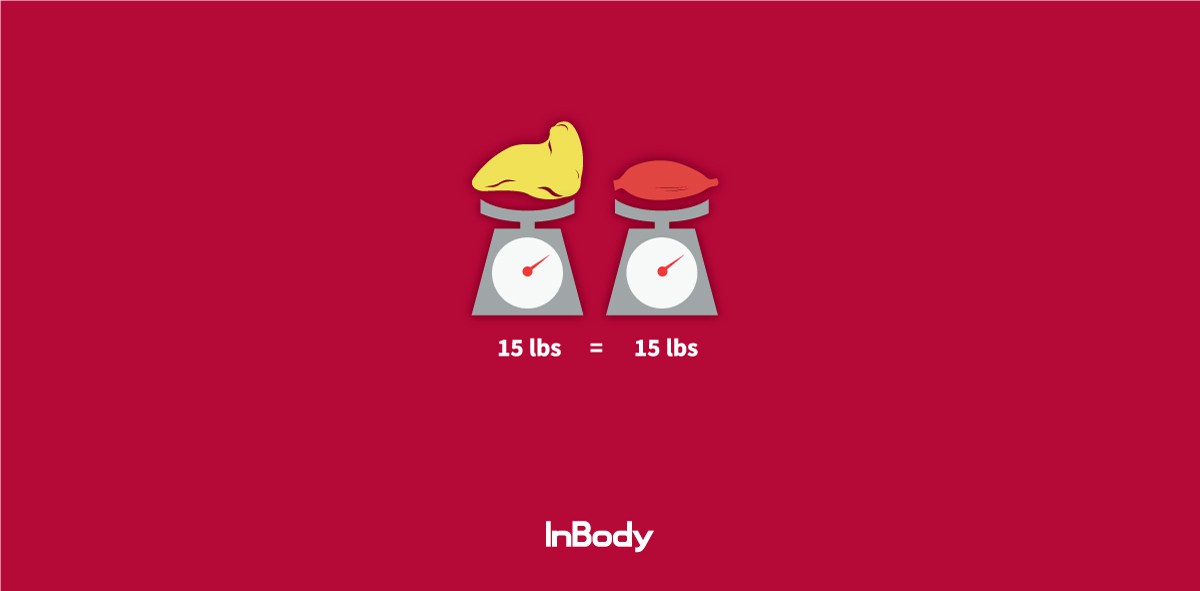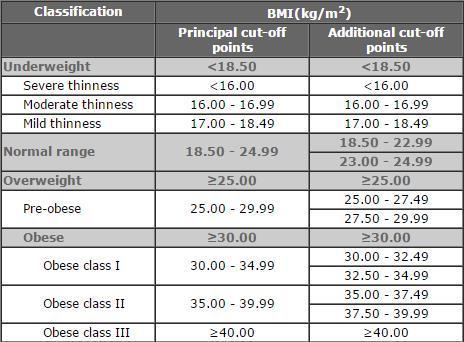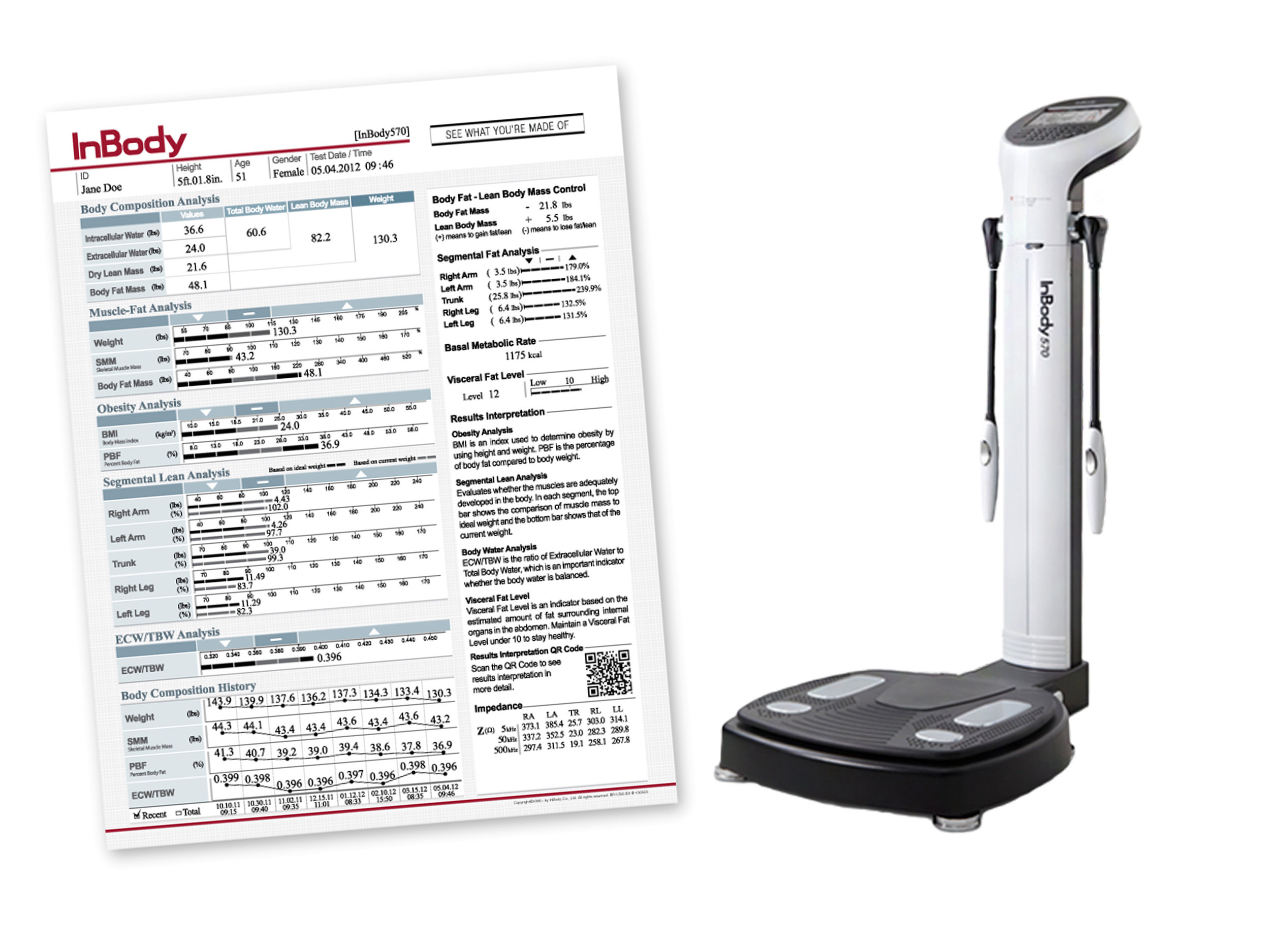You’ve heard about it from people at the gym. Maybe you read up on some fitness or health blogs, and you’re seeing the term pop up. Maybe your doctor is suggesting that you get your body composition checked. Maybe you’re hearing people talk about improving their percent body fat, but secretly, deep down, you’ve always been thinking:
“What is body composition?”
If this sounds like you, fear not, you’re in the right place.
Body composition is the coming thing in health, medicine, and fitness. With a good understanding of your body composition, you can improve your health and change your life for the better.
But before we get into that, let’s answer the burning question – the body composition definition:
Think about when you take your car into the shop. Your car isn’t working, so the mechanic does an inspection of the car’s parts. The mechanic opens the hood, checks the fluids, inspects the working components, and is able to tell you the condition of your car.
Body composition analysis is like that, except instead of learning that you need to change your oil or replace your brake pads, you might learn that your body fat percentage is higher than you thought, or that your right side is stronger than your left and you need to work to bring your body back into balance.
By analyzing your body composition, you can understand why you weigh what you weigh so you can, yes, get the scale to read the number you want. But more importantly, by keeping track of your body composition and seeing your results change over time, you can build a healthier body and enjoy a fuller, fitter (and happier) life.
THIS IS WHAT YOU ARE MADE OF
Let’s start with the basics. The first thing to know is that there are several different models of body composition. The most basic of these is called the 2 component (2C) model, which as the name suggests, divides your body into two components:
1. Fat Mass
The substance everyone seems to always have too much of and is always doing their best to get rid of. However, having some fat is necessary for the body to function: Fat allows the body to store energy, protects internal organs, acts as an insulator and regulates body temperature, among other things. Nobody can have 0% body fat, and maintaining body fat percentages lower than 4% is generally regarded as inadvisable for long-term health.
2. Fat-Free Mass (FFM)
Fat-Free Mass is what it sounds like – all the mass in your body that is not attributed to fat. Your FFM contains a variety of different components, all your internal organs, skeletal muscle mass, body water, etc. Everything that is not fat can be lumped into the category of Fat-Free Mass.
From these two values, your body fat percentage can be deduced by dividing your fat mass by your total weight. If your goal is to determine only your body fat (not lean body mass, muscle mass, etc), procedures that utilize the 2C method can be used to determine your body composition.
For a more detailed body composition analysis, you have to use methods that break the body into more components, such as the 4 component (4C) model. This breaks your body into the following four components, the most significant of which is:
1. Body Water
When you really get down to it, the human body is made up of mostly water. Your fat, muscles, blood, and other bodily fluids all contain water. This can be further broken down into the water contained inside your body’s cells (intracellular water) and the water outside your cells (extracellular water).
2. Protein
This is a reflection of the protein contained in your body’s muscles.
3. Minerals
Your body contains minerals which are primarily contained in two places: in the bloodstream and inside bone tissue.
4. Fat
Your stored energy.
These components describe how the body can be broken down, but not many people walk around talking about their total body water or mineral content. So, here are a few more terms to learn to help you learn how to talk about body composition:
- Dry Lean Mass (DLM): Your Dry Lean Mass is the combination of the weight attributed to the protein and the bone mineral in your body.
- Lean Body Mass (LBM): Your Lean Body Mass is the combination of your DLM and body water.
- Skeletal Muscle Mass (SSM): Not be confused with DLM or LBM, Skeletal Muscle Mass are the muscles that are connected to your bones and allow you to move. These are all the muscles that can be grown and developed through exercise (your pectorals, biceps, quadriceps, and so on).
WHAT’S SO IMPORTANT ABOUT BODY COMPOSITION, ANYWAY?
Put simply, you’ve got to know your body composition if you are in any way serious about managing your weight and improving your quality of life. Without knowing what you’re actually made of, you can only guess at how much muscle and fat you actually have. Guessing leads to frustration, frustration leads to indifference, and indifference leads to quitting.
Body composition also gives you a new way to think about and approach your weight. Although there are several ways to describe body composition, they all have one thing in common: they provide more useful information than relying solely on Body Mass Index (BMI) – the traditional way to determine if you are at a healthy weight, and something you may already be familiar with.
But to understand why body composition is much more helpful and valuable than BMI, you need to learn a bit more about the relationship between fat and muscle. So first, a question:
What weighs more, a pound of fat or a pound of muscle?
Trick question: they weigh the same! But which is bigger, a pound of muscle or a pound of fat? Here’s where things get interesting.
Muscle is significantly denser than fat, which means that 15 pounds of muscle takes up much less space than 15 pounds of fat.
So what does this mean for the average person, who is looking to stay healthy? Well, if you’re simply just that, average – neither athletic nor overweight – then BMI can be a fairly good indicator of your current weight relative to your height. But if you are even a little bit athletic, or if you lead a fairly sedentary lifestyle, BMI can be misleading.
Take a basketball forward, for example. Forwards need both height to easily reach the basket and weight to drive off defending players.
A forward with a height of 6’8” weighing in at 250 pounds would have a BMI of 27.5 – and according to the World Health Organization, an individual with a BMI score exceeding 25 is classified as “overweight.”
But athletic individuals generally have very low body fat percentages (5-10%). Clearly, basketball players with BMIs over 25 are not overweight – they’re athletically very fit.
Now consider a desk-bound office employee. This person may be aware of their weight and try to avoid weight gain by eating healthy, but either lacks the time or planning to exercise regularly. Imagine this person as being 5’4” and 120 pounds for a BMI score of 20.6: solidly in the “normal” BMI range.
Source: WHO
Sedentary adults working in offices who do not exercise are known to lose SSM, especially in their legs. This leads to a drop in weight in muscle mass, but fat remains. This can lead to high body fat percentages, even in individuals with “normal” weights and BMIs. Ever heard of being skinny fat? This is how it happens – and how it goes undetected.
These individuals, although they may stand on a scale and be satisfied with their weight, have the potential to be at risk for some of the same health complications as people who are visibly overweight, with BMI values above 25. These health complications can include cardiovascular disease and diabetes, among others.
HOW CAN YOU CHECK YOUR BODY COMPOSITION?
There are many methods to determine your body composition. Some are quick and easy but provide basic information only. Some are lengthy and expensive and require the assistance of a trained technician to administer a test. Here are a few methods that are used to determine body composition:
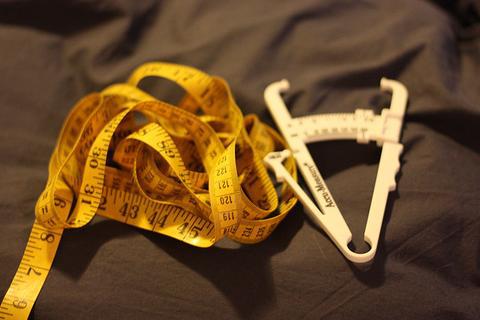
Image Credit: Flickr
This is a method that many people have encountered in their local gym. Calipers are widely used because they are portable, easy to use, and can be administered by almost anyone as long as they have had proper training and sufficient experience.
Calipers work by pinching external body fat in several places around your body and measuring how much skin can be grasped by the caliper’s arms. These results are taken and used in mathematical calculations, which determine the fat content in your entire body.
If this sounds a little simplistic, that’s because it is. Calipers are an example of 2C body composition analysis. Calipers will tell you how much fat you have, but that’s about it.
The other thing to be aware of when you are using calipers to test your body composition is that the accuracy of your results may vary across tests, and the reproducibility (having consistent test results when back-to-back testing) won’t be as high as tests performed on medical-grade machines, which are designed to reduce variance across tests and increase accuracy.
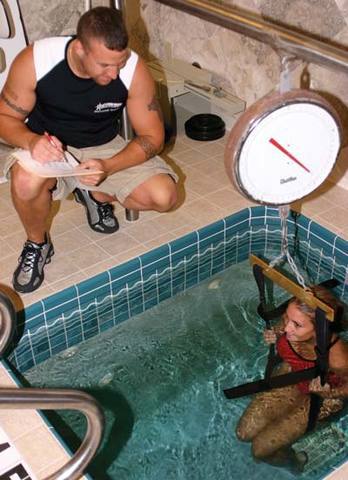
Image Credit: Chemistry Land
Hydrostatic weighing (also known as underwater weighing) involves submersing yourself in a pool and being weighed on a special scale. Once in the pool, you exhale all your air, completely submerge yourself in the water, and let the scale record your weight. Your underwater weight is compared with what you weigh on land, and these numbers, together with the value of the density of the water in the pool, are put through a series of calculations. These calculations produce your body fat percentage.
When done properly, hydrostatic weighing is a very precise method for measuring your body fat percentage, and it is often regarded as “Gold Standard” for body composition analysis. However, just like calipers, hydrostatic weighing cannot report anything beyond body fat, like skeletal muscle mass, body water, and dry lean mass.
To get a hydrostatic weighing test performed, you will need to make an appointment at a facility such as university or high-end sports complex that has built a hydrostatic weighing pool and has trained staff to perform the test.
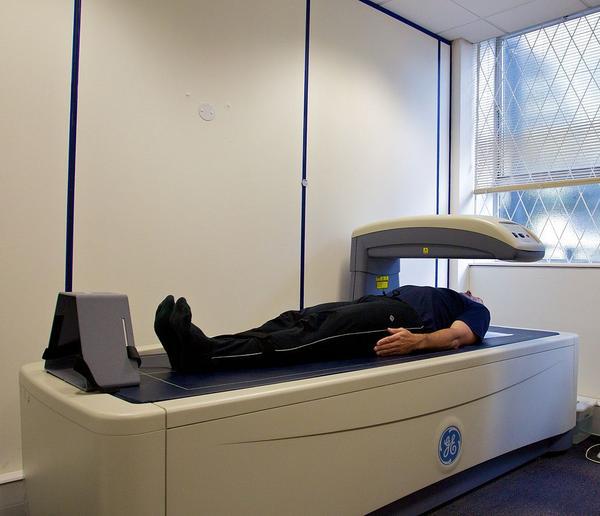
Dual Energy X-Ray Absorptiometry (DEXA)
Image Credit: Nick Smith photography
DEXA (also sometimes abbreviated as DXA), is a medical test that involves lying on a table while a machine sends X-rays through your body and measures the difference in the amount of energy initially sent through the body and the amount detected after it exits the body. Although DEXA was originally designed to measure bone density, it is now also used to measure body fat and body composition, and it can give results such as body fat percentage and soft lean mass.
DEXA scans are also regarded as a “Gold Standard” for measuring body composition analysis. Unlike calipers and underwater weighing, DEXA scans are able to measure the body segmentally, scanning each arm and the trunk separately in order to accurately measure body fat percentage, soft lean mass, and other body composition elements.
In order to get a DEXA scan performed, you will typically need to make an appointment with a hospital or clinic that has a DEXA device. You may need to do some research; not all hospitals and clinics will have DEXA devices.
Bioelectric Impedance Analysis (BIA)
Bioelectric Impedance Analysis (BIA) works by sending a small electrical current into a person and measuring the opposition of that current (impedance) as it travels throughout the body’s water. Once impedance is measured, body composition is ascertained. Unlike other methods, a technician does not always need to be present at a BIA test, and you can use BIA devices with just by following the directions on the device.
BIA devices range widely in quality and accuracy, and you should be aware that not all BIA devices test the entire body. Some devices, such as home bathroom scales, use BIA to directly measure leg impedance only and use estimations to determine results for the upper body. Others are handheld devices that only directly measure arm impedance and estimate results for the lower half.
By contrast, modern, medical-grade BIA devices are able to measure the entire body directly, and can be extremely accurate – even as accurate as the “Gold Standard” procedures – without the complications that those procedures sometimes entail. The most advanced BIA devices are even able to perform segmental analysis.
Because BIA measures work by measuring body water, a lot of useful information can be reported. Although nearly all BIA devices will tell you your body fat percentage, some devices can go much further and report the body water weight, skeletal muscle mass, lean body mass, and much more.
Hopefully, this helps you understand a little more about body composition. Knowing your body composition is the first step towards improving it, so if you’re able, schedule a body composition test soon. Having a fitter and better body composition result can aid you immensely in understanding your weight, improving your overall health, and generally living a fuller, happier life.
Schedule an Inbody Test with our staff. We recommend a day and time that doesn't interfere with your day and your RZ workout. This way we can explain your results, make recommendations and set goals.
For a recap of all this, check out this video:

